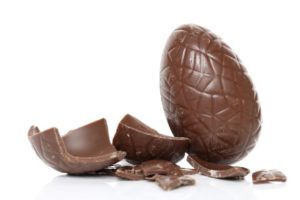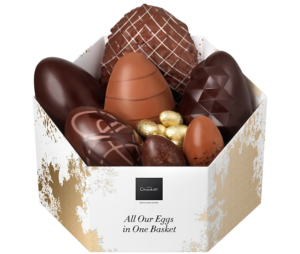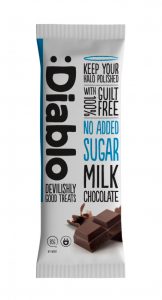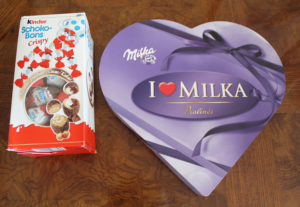 As the nation prepares for a long weekend of Easter egg hunts and celebrations, new research from Mintel finds more than half (53%) of all Brits will be splashing out on chocolate gifts such as Easter Eggs and chocolate boxes this year. And across the UK, those in the North and Scotland are set to be the most likely to buy chocolate this Easter, with almost six in ten (58%) doing so.
As the nation prepares for a long weekend of Easter egg hunts and celebrations, new research from Mintel finds more than half (53%) of all Brits will be splashing out on chocolate gifts such as Easter Eggs and chocolate boxes this year. And across the UK, those in the North and Scotland are set to be the most likely to buy chocolate this Easter, with almost six in ten (58%) doing so.
Those living in the East and West Midlands are also set to be big chocolate spenders, some 56% saying they will buy chocolate gifts. Meanwhile, those least likely to be splashing out on chocolate treats are consumers in Inner and Greater London (43%) and Yorkshire and Humberside (50%). An average of 53% of consumers buy Easter chocolate gifts in South East/East Anglia, South West and Wales and North West.
Chocolate will be high priority for the nations ladies, some 62% of women purchasing chocolate Easter gifts compared to 43% of men.
Neil Mason, Head of Retail Research at Mintel, said:
 “While Scottish consumers are the most likely to buy chocolate gifts this Easter, the fact that over half of British consumers will be splashing out on chocolate Easter gifts highlights how important Easter is for retailers across the country. But there are likely still opportunities to drive up participation and average spend for events such as Easter. And for store-based retailers, facing competition from online-only rivals, seasonal occasions provide opportunities to make their shops destinations. Seasonally themed ranges, merchandising and in-store events can provide shoppers with reasons to visit their stores.”
“While Scottish consumers are the most likely to buy chocolate gifts this Easter, the fact that over half of British consumers will be splashing out on chocolate Easter gifts highlights how important Easter is for retailers across the country. But there are likely still opportunities to drive up participation and average spend for events such as Easter. And for store-based retailers, facing competition from online-only rivals, seasonal occasions provide opportunities to make their shops destinations. Seasonally themed ranges, merchandising and in-store events can provide shoppers with reasons to visit their stores.”
Although, children are a major driving force for Easter egg purchasing (some 30% of consumers say that they tend to buy Easter eggs for children), nearly one in twenty (18%) say they tend to buy Easter eggs for adults. Of chocolate buyers, a quarter (26%) say they are prompted to buy chocolate when they see a seasonal products such as bunny shapes for Easter.
However, while the nation spends on Easter treats, a third (34%) of Brits believe Easter is becoming too commercial, while a quarter (26%) of Brits believe Easter eggs are not good value for money*.
“When asked to reflect on seasonal events, many consumers seem to think they are largely money-making schemes for retailers and brand owners. At the same time, many shoppers like to shop, cynicism does not stop consumers buying into these events.” Neil continues.
 Last year UK consumers spent a delicious £500 million on Easter products, which includes confectionery at around £250 million, in-home food and drink at £120 million, gifts at £112 million and greetings cards at £18 million. As many as seven in ten (68%) Brits spent money on Easter last year, with the top three ways in which Brits spent their money being Chocolate gifts (eg Easter eggs) (53%), followed by Greetings cards (13%) and a Special meal at home (10%).
Last year UK consumers spent a delicious £500 million on Easter products, which includes confectionery at around £250 million, in-home food and drink at £120 million, gifts at £112 million and greetings cards at £18 million. As many as seven in ten (68%) Brits spent money on Easter last year, with the top three ways in which Brits spent their money being Chocolate gifts (eg Easter eggs) (53%), followed by Greetings cards (13%) and a Special meal at home (10%).
Brits spend an average of £23.39 enjoying Easter festivities with those in the North West £25.91 and the North and Scotland £25.87, proving to be the biggest Easter spenders. Those in the East and West Midlands £19.38 and Yorkshire and Humberside £19.67 are the least likely to splash out on Easter festivities. As for the remainder of the country, those in Inner and Greater London spend an average of £24.94, with those in South West and Wales spending £24.80 and South East/East Anglia spending £23.16. Across the nation, Easter spend peaks among those aged 55 and 64 at £27.47.
Overall, almost seven in ten (68%) UK consumers spent money on any goods or services for Easter in 2014, more than consumers spent on Mother’s Day (64%), Valentine’s Day (55%) and Halloween 2013 (43%).
Consumers not sweet on low sugar chocolate
 As many as 90% of Brits ate chocolate over the past three months, with over one in 10 (13%) eating it once a day or more. But the issues of calories and sugar are off-putting for around a quarter of consumers as some 28% of Brits who eat chocolate say the high sugar content of chocolate makes them limit the amount they eat, whilst 27% say they limit the amount they eat because of the high calorie content
As many as 90% of Brits ate chocolate over the past three months, with over one in 10 (13%) eating it once a day or more. But the issues of calories and sugar are off-putting for around a quarter of consumers as some 28% of Brits who eat chocolate say the high sugar content of chocolate makes them limit the amount they eat, whilst 27% say they limit the amount they eat because of the high calorie content
Despite on-going issues surrounding sugar, just 25% of chocolate eaters say they have tried reduced sugar chocolate, however, 44% have yet to try it, but would be interested in trying it in the future. Of greater interest is chocolate which retains the cocoa bean, indeed, some 60% of chocolate eaters have not tried but would be interested in trying chocolate that retains the nutrients of the cocoa bean (eg. antioxidants). Half (49%) of chocolate eaters haven’t tried but would be interested in trying in the future premium products from their favourite brand.
Europe drives chocolate Innovation
Meanwhile, the global chocolate market has enjoyed much innovation, with new product launches growing 18% between 2013 and 2014. According to Mintel’s Global New Product Database (GNPD), Europe accounted for 51% of all launches, followed by Asia Pacific 21%, North America 12%, Latin America 9%, Middle East & Africa 6%.
 Across Europe, Mintel’s research highlights the top reasons consumers may be tempted by chocolate this Easter. French consumers are most likely to buy it to “treat myself”, with 76% of chocolate eaters claiming this factor, followed by 69% of Brits, 58% of Spanish , 38% of italian and just 29% of German consumers.
Across Europe, Mintel’s research highlights the top reasons consumers may be tempted by chocolate this Easter. French consumers are most likely to buy it to “treat myself”, with 76% of chocolate eaters claiming this factor, followed by 69% of Brits, 58% of Spanish , 38% of italian and just 29% of German consumers.
Meanwhile, Italians are most likely to reach for chocolate to relax, with 39% of Italian chocolate eaters claiming this factor, followed by 33% of British, 31% of German, 29% of French and 24% of Spanish consumers. Conversely, it seems British consumers are more likely to need the sugar hit – with 23% of British consumers claiming they eat chocolate for an energy boost, compared to 24% Italian, 18% Spanish, 17% French and 16% German consumers.

You must be logged in to post a comment Login